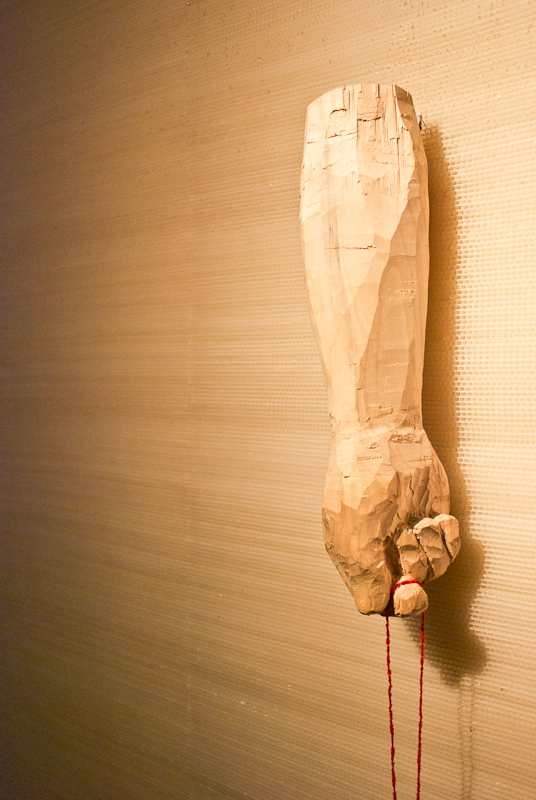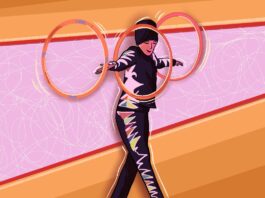Nostalgica is about society’s obsession with technological artifacts from the past, exhibition curator and Carleton student Leona Nikolic said.
It explores why things from the past are being brought up now.
“Technology, specifically, records and record players, film cameras, cassette tapes, typewriters, are kind of a novelty thing to have right now,” Nikolic said.
“I was wondering why we have this preoccupation with these old technologies when there are so many things right now that function a lot better,” the third-year art history student said.
The exhibition, was held Nov. 9 at downtown gallery La Petite Mort, and featured emerging artists Stephanie Paiement, Blair Smith, and established artist Bozica Radjenovic.
Their works fit into a theme of re-contextualization — bringing the past out of its place and trying to use it in a way that applies to the present and the future.
“My work is paintings, acrylic on paper. I find images circa the 1940s [and] 1950s of women and I make collages and I kind of just repaint and re-manipulate it in kind of a surrealistic way,” Paiement said.
“I think it is a very nostalgic way of thinking.”
“I think it’s just trying to connect with a past that you can’t really get to. And also with my images if I take them I can flip them around to give them a new meaning that relates in a contemporary way.”
Young people today are particularly trying to grasp the symbolic past brought on by feelings of how to reconcile the past with the present, and in shaping the imagining of the “post-present,” she said.
Paiement said that the feeling of being out of place, and longing for a time in the past is something most generations go through.
She said that this dissatisfaction leads people to appreciate relics of the past and leads people to feel at home.
Using Polaroid technology, Smith’s pieces of music festivals were difficult to differentiate which decade they came from.
“I always have resorted back to using film or instant film only because it gives you the certain physicality, a little bit more dimension that a digital image can’t give you,” Smith said about what her medium represents.
“My work like the others relates in the old fashioned sense that everybody has sort of stuck to something, an old resource or technology that they thought they could keep throughout the times,” Smith said.
Radjenovic approaches the theme from a more conceptual perspective.
“Her pieces are entering into the past, and sort of adopting a persona from the past for the present. Re-contextualizing the sort of attachments that we have to the past,” Nikolic said.
This nostalgic tension to ascribe meaning to the present, by drawing from the past, brings questions of how society can reconcile the past with the future toward a “post-present,” she said.




